- Vitarka Mudra
- Bhumisparsha Mudra
- Dharmachakra Mudra
- Varada Mudra
- Abhaya Mudra
- Dhyana Mudra
- Anjali Mudra
- Karana Mudra
- Uttarbodhi Mudra
- Vajra Mudra
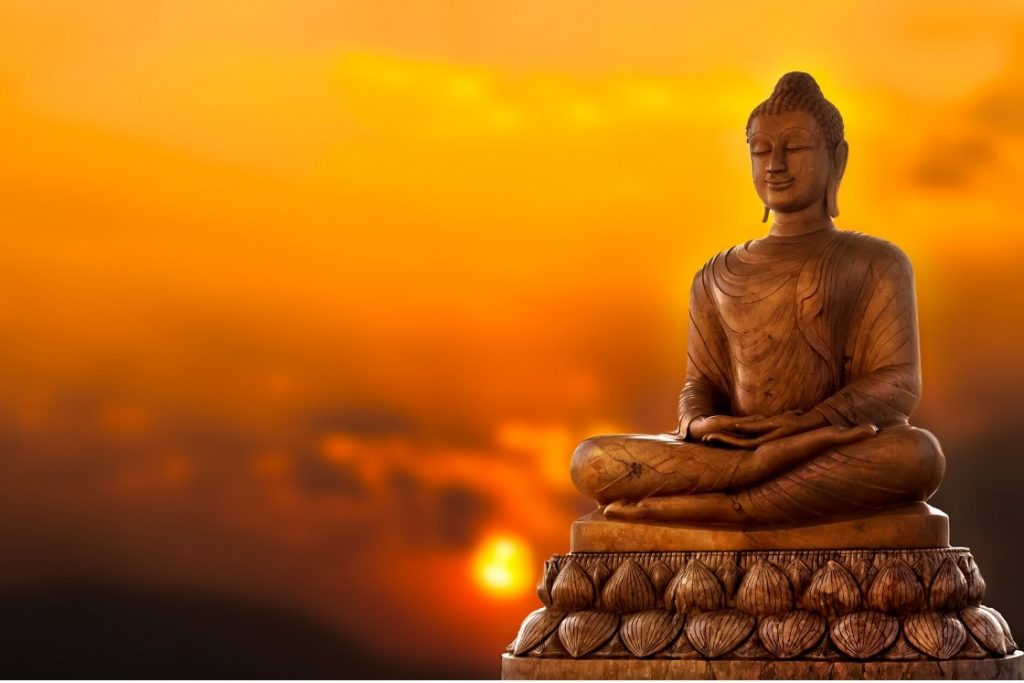
Buddha statues are often distinguished by their unique hand gestures, known as Buddha Mudras. Each Mudra represents a significant moment in the Buddha’s life and holds deep meaning in Buddhism, symbolizing principles like compassion, wisdom, fearlessness, and enlightenment. These gestures are not just symbolic; they are also used in meditation to help practitioners connect with the Buddha’s enlightened state of mind and the teachings he shared.
By practicing these Mudras, individuals are believed to evoke the spiritual qualities the Buddha embodied, guiding them toward self-realization and inner peace.
1. Vitarka Mudra – Hand Gesture of Teaching
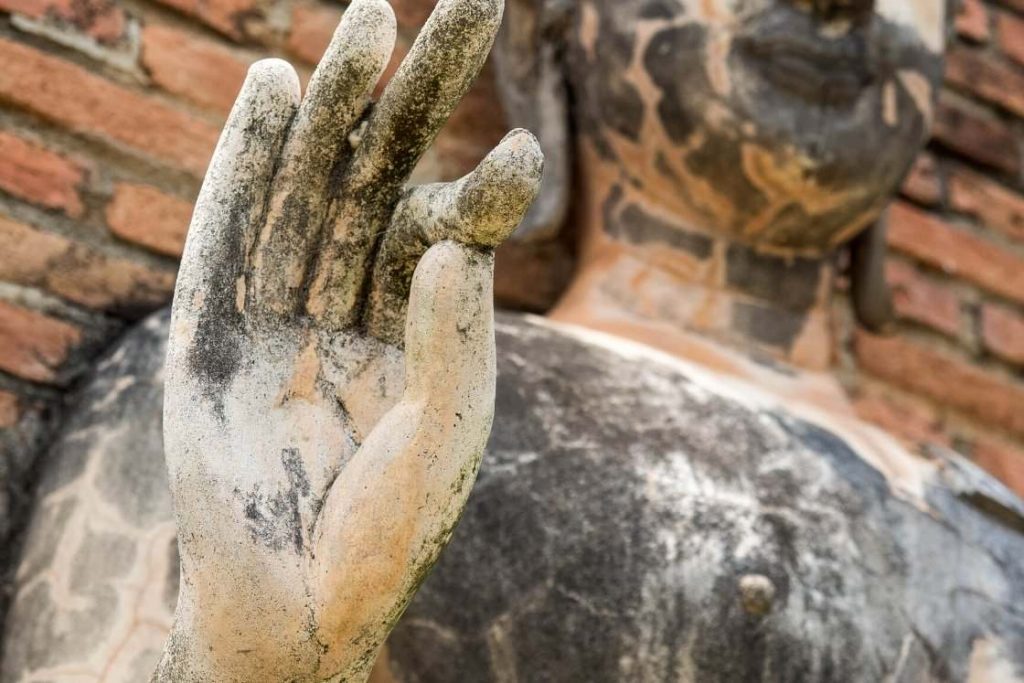
Vitarka Mudra symbolizes the transmission of the Buddha’s teachings, wisdom, and principles that he acquired after achieving self-realization. It is typically performed by raising the right hand to chest level, forming a circle with the thumb and index finger, known as the “wheel of teaching.” This circle signifies unity and the infinite nature of knowledge, with no beginning or end.
This mudra emphasizes that words are not the only means of communication; it suggests that teachings can be transmitted invisibly, activating consciousness at a subtle level. It represents the relationship between teacher and student, also known as Vyakhyana Mudra, meaning “Gesture of Instruction.”
2. Bhumisparsha Mudra – Gesture of Earth Witnessing

Bhumisparsha is a Sanskrit term that means “touching the earth.” This mudra is performed by touching the ground to call upon the earth as a witness to a significant pledge or event. The Buddha used this gesture to affirm his enlightenment under the Bodhi tree. There is a story that goes behind this pivotal moment:
When Buddha was sitting in meditation under the bodhi tree, he was deluded by a demon named mara. Therefore, to continue his practice, Buddha performed Bhumisparsha Mudra and request mother earth (Sthavara) to witness his celibacy toward enlightenment.
In Buddha statues, the Bhumisparsha Mudra is depicted with the left hand resting on the lap, and the right hand extending downward, with the fingers touching the earth and the palm facing inward. This portrayal captures the essence of the Buddha’s call to the Earth as a witness to his enlightenment.
This mudra leads to the realization of non-self (Buddhism) by the unification of nirvana and samsara. Realization or attainment of the higher state is called Nirvana (Mukti or Moksha in Hinduism) and liberating one from the cycle of birth and death called Samsara.
3. Dharmachakra Mudra – Gesture of Dharma
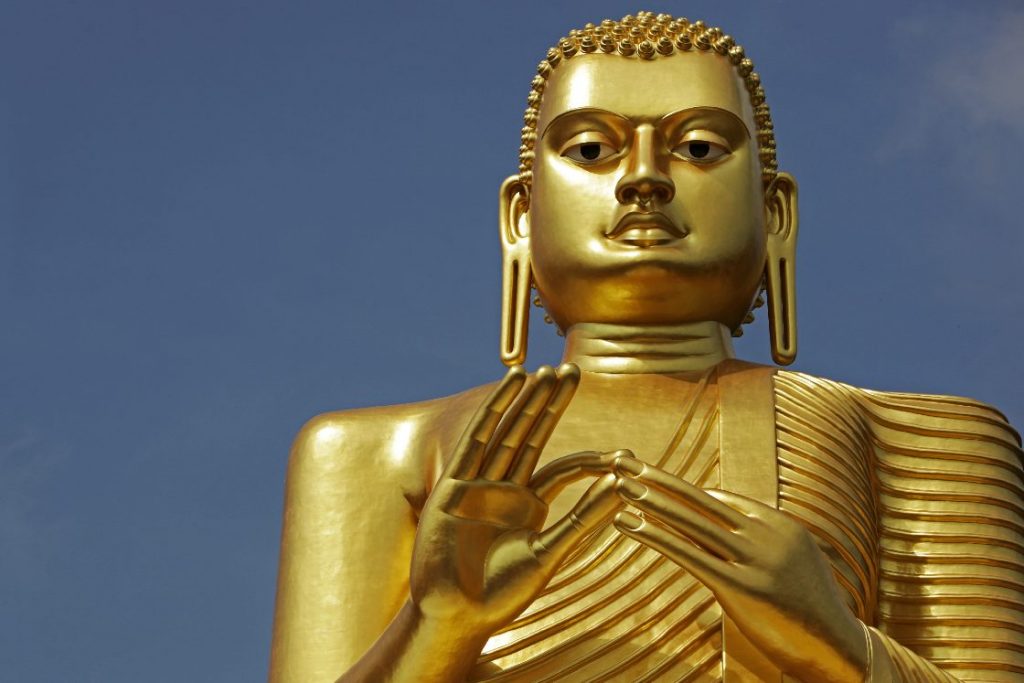
Dharmachakra means ”wheel of Dharma”. This hand gesture is performed by the buddha while delivering his first religious teaching after attaining enlightenment.
This mudra illustrates the cosmic arrangement of Buddha’s teaching, which has a history of setting a wheel of Dharma into motion at Sarnath.
Dharmachakra mudra is easy to perform. Every placement and position of fingers and hand reflects a certain meaning. Likewise, the left and right hand signifies the insight or awareness of the outer and inner world.
The three stretched finger represents Buddha, Dharma, Sanga called three jewels in Buddhism. The wheel formed by index and thumb finger shows the association of method and wisdom in the metaphysical context.
4. Varada Mudra – Gesture of Blessing
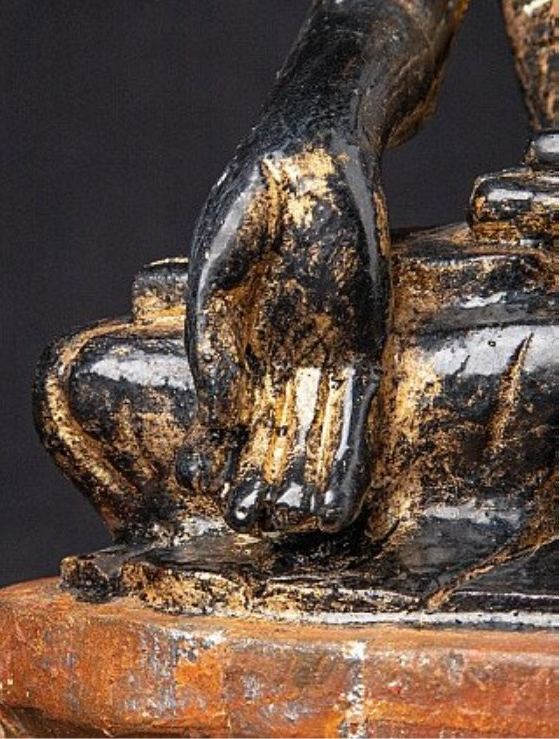
The Varada Mudra symbolizes the Buddha’s compassion and his blessings. It is also known as the “wish-granting mudra” for disciples seeking spiritual blessings from the enlightened guru.
This mudra is performed with the left arm extended downward, the palm facing outward, and the fingers upright or slightly bent. The five fingers pointing downward represent the qualities of generosity, morality, patience, effort, and meditative concentration. These qualities help plant seeds of forgiveness and groundedness in the practitioner’s heart.
Buddha statue is usually seen holding Verada mudra with another mudra called Abhaya mudra (gesture of fearlessness). it brings holy vibes in mind when performed during meditation.
5. Abhaya Mudra – Gesture of Fearlessness
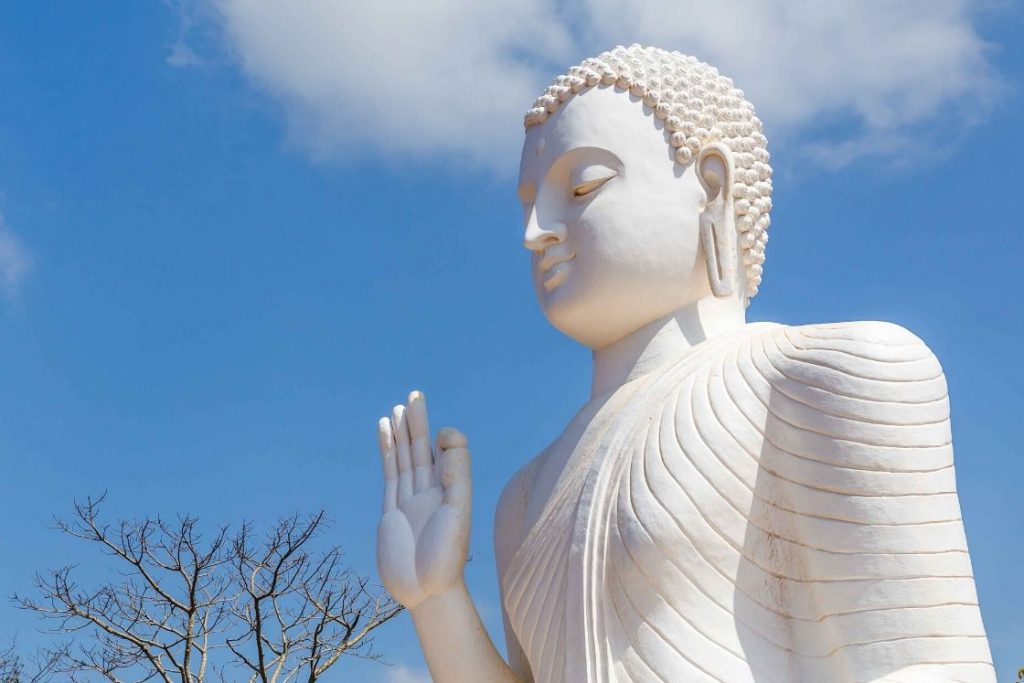
Abhaya Mudra is a hand gesture that represents protection, benevolence, and fearlessness. It’s a variation of Gyan mudra right hand is lifted to the chest level and slightly raised outward, palm facing forward. Left-arm is hanging downward while facing the sky beside the body.
Why Buddha adopted this mudra, there’s story goes this;
Due to jealousy, Devdatta, Buddha’s cousin once wanted to kill him. He left a rampaging element over the Buddha while he was wandering. Towards which Buddha performed Abhaya Mudra, seeing Buddha in the Mudra elephant came stopped and calmed down before the Buddha.
It is believed that Abhaya mudra dispels fear before it approaches near acquiring one.
Abhaya mudra spread peace, love, and friendship. It is said that ancient people used to perform this mudra while meeting or greeting strangers. This shows the unarmed being approaching each other for the welfare of each other or humankind.
6. Dhyana Mudra – Gesture of Meditation

Seated meditating Buddha in Dhyan Mudra is the most common picture of Buddha. It is said that Buddha used to practice this mudra before the enlightenment.
Holding hands in this mudra in a meditation session dwells a practitioner into the deep state of supremacy and harmony.
In Dhyan mudra, the right hand is placed over the left hand and both hands in this position rest upon the lap. In some other forms, the tips of both thumbs joined together to form a triangle like structure. It’s called a mystic triangle. The esoteric groups keep various interpretations regarding this triangle. One of the obvious is the identification of mystic fire, burning all the impurities.
Shakyamuni and Amitabha Buddha are the representation of Dhyana Mudra. This mudra is used to heal physical illness. It also purifies negative karma while mantra recitation of Medicine or Bhaisajyaguru Buddha.
7. Anjali Mudra – Gesture of Salutation
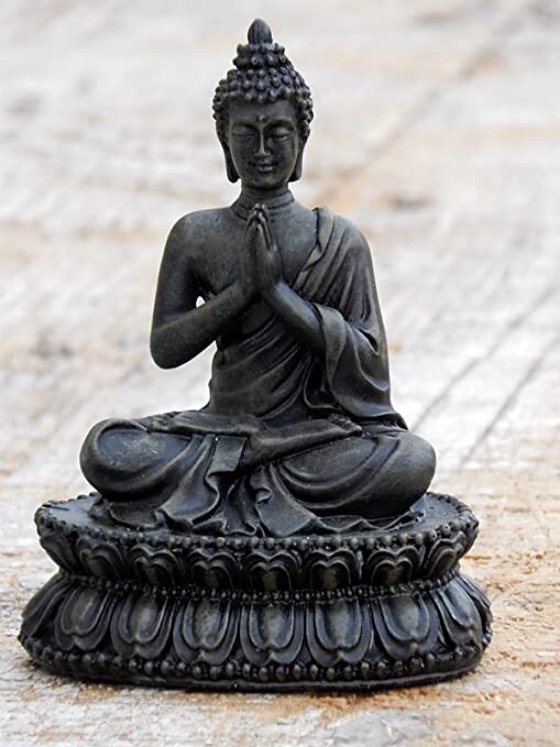
Anjali mudra is a gesture of greeting people with immense respect and welcoming approach.
This mudra is often practiced as a homage to the buddha by the bodhisattva on the path followed by buddha. However, enlightened Buddhas no longer practice this mudra. According to them, being with the divine energy there’s no urge to show affection toward others as all become unified or single entities.
This can be done by folding hand near the chest or Anahata chakra, where both hands signify the two aspects of the universe, “The material world” and “The spiritual world”.
8. Karana Mudra – Gesture of Banishing

Karana Mudra represents the deflection of the negative energy or ward off the evil that comes in your path to truth.
This mudra can be done by bringing hands at the chest level. Folding the ring and middle finger inward and touch them on the tip of the thumb while palm facing outward.
By just a glance of this mudra made us feel protected. This mudra eradicates the evil before it reaches near you. Fingers placement concerned withe this mudra stimulates the energy at a subtle level that invigors the body aura with a divine wrapping that overcomes the obstacles with the potential to harm our liberation.
9. Uttarbodhi Mudra – Gesture of Self-Realization
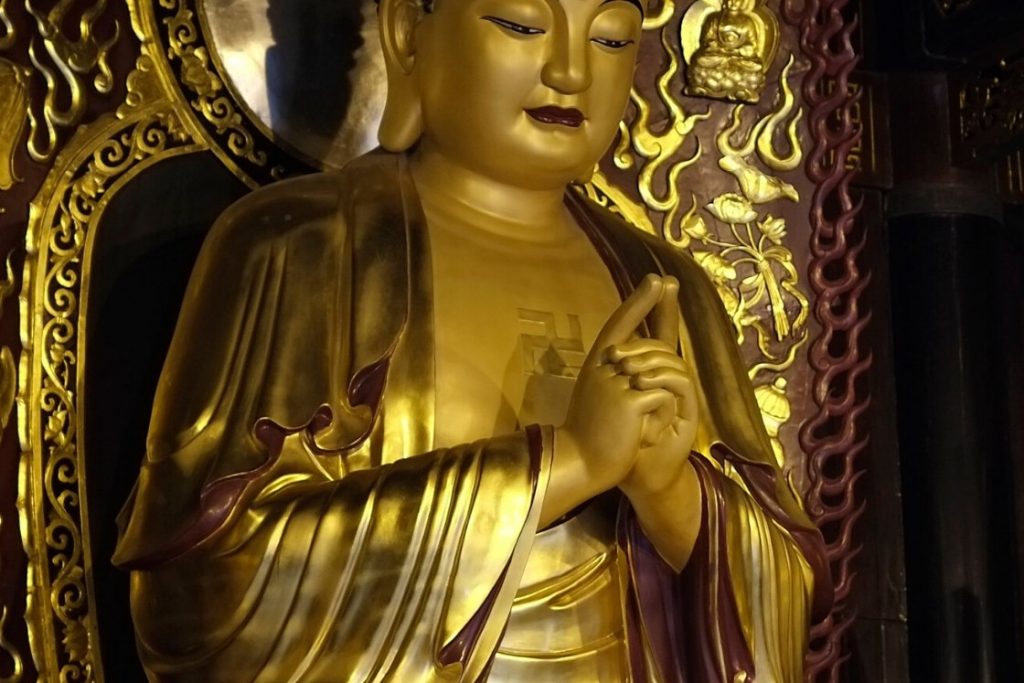
Uttarbodhi mudra lifts a practitioner to the state where the union of self to the supreme happens. To perform it, Join hand at the level of the heart region. Intertwined fingers except for the index and stretch the thumb downward.
Practicing this mudra leads to enlightenment as Buddha.
The finding of self is the continuous process of clearing and filtering the illusion of worldly or materialistic mindset.
Practitioner realises the self through meditating in this mudra on this thought.
Uttarbodhi Mudra provides an insight with which a practitioner take him/her out of the various mental level due to which they are suffering since a long time. It also helps in confidence and evoking the inner spirit, respectively.
10. Vajra Mudra – Gesture of Fiery Thunderbolt
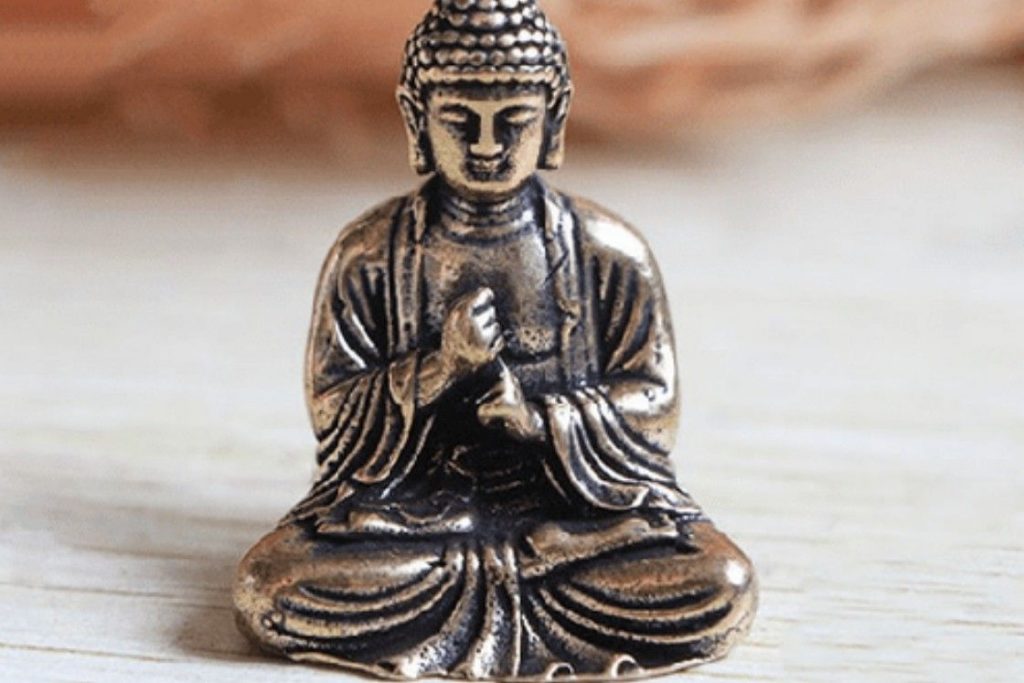
Vajra Mudra is a gesture that expresses the unification of all belief in Buddhism, as per Tantrism. Vajra represents a Thunderbolt (the destroyer of negative and ignorance). Encircling the right-hand fingers around the left index finger forms the Vajra Mudra.
There are various interpretations attached to this gesture in this way. The five fingers represent the five elements air, water, space, fire, and earth encircling the man or body (left index finger). Another one is the left index finger represents the knowledge and the fingers wrapping, here signify worldly illusion.
This mudra is concerned with the Vairochana Buddha or the celestial buddha that illuminates one’s insight towards the world. This also leads to a spiritual journey.
Conclusion
Using Buddha Mudras in your meditation practice can significantly enhance your spiritual journey. Each Mudra symbolizes important Buddhist principles like compassion, wisdom, and fearlessness. By adding these gestures to your routine, you connect more deeply with the Buddha’s teachings and achieve a more profound state of meditation.
These Mudras are practical tools that help you cultivate the qualities they represent. Regular practice of Buddha Mudras can deepen your connection to Buddhism and promote inner peace and self-realization. Embrace these gestures to enrich your meditation and support your personal growth.





Thank you so much for sharing this resource! It’s enlightening to learn about the deeper meanings behind these mudras, and I appreciate having such a clear guide to enhance my meditation practice.